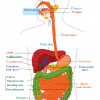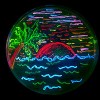Synthetic Biology
 Genetic engineering is a common tool used by molecular biologists to manipulate the genes of an organism. One of the common forms of this technology is to transform bacteria with a gene from another organism, for example, the green fluorescent protein gene from the Pacific Jellyfish. Giving this gene to bacteria will allow them to produce this protein and literally glow green. This technique has been widely used by pharmaceutical companies to produce human proteins as well to treat some common genetic disorders, such as diabetes. To see more on insulin production inside bacteria see, visit our DNAi.org section on manipulation.
Genetic engineering is a common tool used by molecular biologists to manipulate the genes of an organism. One of the common forms of this technology is to transform bacteria with a gene from another organism, for example, the green fluorescent protein gene from the Pacific Jellyfish. Giving this gene to bacteria will allow them to produce this protein and literally glow green. This technique has been widely used by pharmaceutical companies to produce human proteins as well to treat some common genetic disorders, such as diabetes. To see more on insulin production inside bacteria see, visit our DNAi.org section on manipulation.
Undergraduate students are now being challenged during the International Genetically Engineered Machine (iGEM) competition at MIT to take this very common tool and apply it to a new field called Synthetic Biology. They can order different pieces of DNA to string together and function inside of living cells, almost like LEGO pieces being built up together to form a castle. There is actually a catalog of different types of gene segments, such as promoters, terminators and primers. Organizers of the competition are striving to go beyond simple gene transfer, by making new synthetic pieces of DNA that can be attached together to form a new set of instructions that can be taken up by a living cell, such as bacteria. Projects ranged from banana and wintergreen smelling bacteria, to an arsenic biosensor, to Bactoblood, and buoyant bacteria.
| Print article | This entry was posted by Jennifer Galasso on February 16, 2010 at 1:25 pm, and is filed under DNA Interactive. Follow any responses to this post through RSS 2.0. You can skip to the end and leave a response. Pinging is currently not allowed. |


